Our faith tends to lie in conventional medicine, with many of us making a quick dash to the pharmacy at the first sign of discomfort. However, this was not always the case.
People have relied on natural remedies to cure their ailments throughout history, and many still do today. The Amish provide an excellent example of how natural products, such as plants and herbs, can be used to heal ailments.
While not always opposed to conventional medicine, the Amish prefer natural medicine, and for generations, they have relied on natural products to treat health conditions.
We can learn many interesting and helpful home remedies from the Amish, some of which you may not have heard before.
Many of these treatments are still used and are even the foundation on which conventional medicine is built. Here are some Amish remedies that can help you heal without seeing a doctor or visiting a pharmacy, as there may come a time when this is impossible.
Potatoes Can Cure Headaches
A bad headache can ruin even the best of days. People everywhere suffer from headaches. While some headaches come on slowly, others attack without warning.
There is a strange old remedy that many people use to treat headaches, and all you need is a few potatoes.
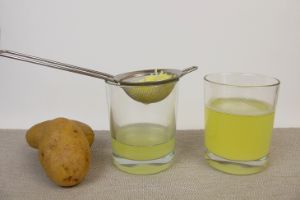 From consuming potato juice to placing potato slices on your face, potatoes have been used for centuries to treat headaches and migraines in almost every culture.
From consuming potato juice to placing potato slices on your face, potatoes have been used for centuries to treat headaches and migraines in almost every culture.
This practice is still common among the Amish population today and is one of the remedies that many swear by.
The juice of potatoes will provide a substantial amount of potassium, which is thought to be effective in fighting headache pain. However, since drinking potato juice is not a pleasant experience, many will not be willing to try it.
Related: How To Can Potatoes for Long Term Preservation
Instead, you can eat a baked potato to quickly absorb much-needed potassium. Alternatively, you could place a few slices on your face and near your temples.
Homemade Cough Syrup
Horehound is a member of the mint family. It has many benefits, especially in respiratory support and cough relief. Horehound will also aid in good digestion, support immunity, and ease inflammation, among other things.
Horehound syrup has been used to treat coughs for hundreds of years.
Ingredients:
- 1 oz. fresh or dried horehound leaves
- 1 pint of boiling water
- 3 cups of honey
Directions:
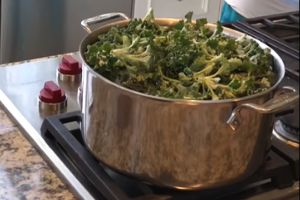 Bring water to a boil. Add horehound leaves and reduce heat. Let the mixture steep for 10 minutes.
Bring water to a boil. Add horehound leaves and reduce heat. Let the mixture steep for 10 minutes.
Strain the liquid and measure, adding twice the amount of honey, and mix well. Pour the mixture into a sterilized glass container. Cover and store it in a cool dark place.
Have a teaspoon of horehound syrup four times a day until the cough subsides.
Homemade Decongestant
There is nothing better than a decongestant to break up the guck in your chest and relieve sinus pain when you are sick. You can make a decongestant at home, saving money and avoiding dangerous additives.
Ingredients:
- 2 tsp. dried or chopped peppermint leaves
- 1 tsp. rosemary
- 1 tsp. thyme
- 1-quart water
Directions:
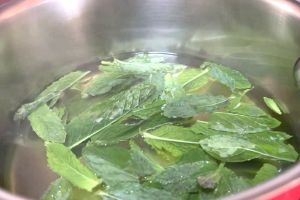 In a saucepan, combine rosemary, peppermint, and thyme with water, and bring to a boil.
In a saucepan, combine rosemary, peppermint, and thyme with water, and bring to a boil.
⇒ Buy Here A Kit That Has Everything You Need To Start Your Medicinal Herb Garden
Turn off the heat, and cover the pot. Let the mixture steep and simmer for 10 minutes.
Draping a towel over your head, lean over the pot. With your eyes closed and head covered, breathe in the vapors.
Breathe slowly and deeply for five minutes to loosen phlegm and decongest your chest. Repeat as needed.
White Willow Bark Amish Fever Fighting Tea
White willow bark tea is an old Amish recipe that has been used for centuries to fight fever, reduce inflammation, relieve headache and ease arthritis pain.
While people used to chew willow bark for relief, they soon discovered that using the willow bark to create a tea was equally effective and worked much faster.
White willow bark contains salicin, similar to aspirin, and helps treat pain associated with inflammation or reduce fever. Note that if you have been told to abstain from aspirin, this recipe is not for you.
Ingredients:
- 1-2 tbsp white willow bark
- 1 cup water
- honey to taste
Directions:
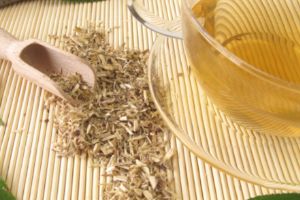 Place the willow bark and water in a saucepan and bring to a boil.
Place the willow bark and water in a saucepan and bring to a boil.
Once a rolling boil is achieved, cover the pot and allow it to simmer for 10 minutes.
Turn off the heat but leave the pot in place covered and allow it to steep for 30 minutes.
Remove the pot cover, strain the liquid, and add honey to taste. Willow bark is known to be bitter, and you may require a fair amount of honey to achieve the flavor you desire.
Consume up to 4 cups of willow bark tea daily and be patient as you wait for relief. The best part of willow bark tea is that the effects, while slow to start, will last a fair amount of time.
An Old Amish Sore Throat Secret
This old Amish life hack is more of a quaint tea concoction that has been passed down through generations.
⇒ Learn How To Make A 2-Minute Amish Syrup For Colds And Coughs
All you need to create this old Amish recipe is some black currant jam or jelly. While black currants are very healthy, they are often difficult to find. The shrub of black currants is known to carry a fungus that kills pine trees, and because of this, they cannot be purchased in most garden stores.
Thankfully, you can find pre-made black currant jams and jellies that will work for this recipe. When purchasing the jam, ensure you buy black currant and not red.
Ingredients:
- 1 tablespoon of black currant jam or jelly
- the juice of half a lemon
- 1 pint of water
- sugar or honey to taste.
Directions:
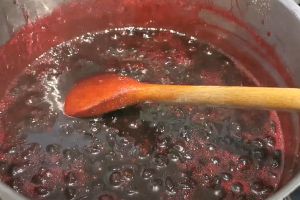 Mix all ingredients together in a medium saucepan.
Mix all ingredients together in a medium saucepan.
Bring the mixture to a simmer and reduce the heat. Stirring occasionally, keep the mixture at a low simmer for approximately 10 minutes. Pour the mixture into a cup and drink it while it is hot.
This black currant tea can be consumed several times a day as needed until you feel better.
Amish All-Purpose Tonic
This old Amish recipe has been passed down through many generations and is still used by many to treat common colds and flu.
The recipe requires some work and planning, and many Amish people will create this mixture before the start of flu season to have on hand.
Ingredients:
- a sterilized jar with a tight-fitting lid
- ½ cup fresh horseradish, peeled and chopped
- 10 cloves garlic, peeled and minced
- 1 white onion, diced
- ½ cup ginger root; fresh, peeled, and chopped
- 2 fresh jalapenos, sliced (use gloves when handling)
- 2 lemons, sliced thin (no need to peel, but wash well)
- 2 tablespoons of dried rosemary
- 1 tablespoon of turmeric
- ¼ tsp. cayenne pepper
- apple cider vinegar
- honey to taste
Directions:
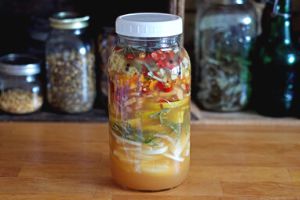 Add all ingredients to the jar, except the vinegar and honey. Add enough apple cider vinegar to cover the mixture and tighten the lid.
Add all ingredients to the jar, except the vinegar and honey. Add enough apple cider vinegar to cover the mixture and tighten the lid.
Related: Making Raw Apple Cider Vinegar at Home
Store the mixture in a cool, dark place.
Visiting the jar once or twice a day to shake the mixture, allow it to blend and steep for at least one month.
After a month, strain out the liquid. Ensure you press and squish the mix to extract all of the valuable liquid. Add as much honey as you wish to make the mixture palatable. Store the mix in a sealed container.
Amish Plasters
Common in Amish circles, plasters are quick and easy to prepare. They are mainly used to help recover from colds and flu or promote decongestion caused by a cold but may also ease other ailments.
Since plasters are so easy to make, they have been a long-time favorite among Amish people.
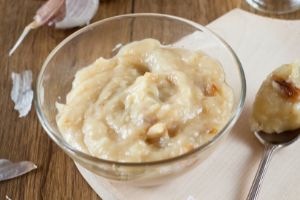
For example, to create a garlic plaster, you mince several garlic cloves and add olive oil to form a thick paste.
Wrap this paste on a square of flannel or cotton.
Make sure it is not oozing out the sides of the fabric, and place it on your chest.
Cover the wrapped material with hot water bottles or a warm blanket, and keep it on for 15-20 minutes.
Mustard plasters can be used when you suffer from stubborn chest congestion. To prepare, combine 1 tablespoon of mustard with ¼ cup of flour and add just enough warm water to create a thick paste.
Place the paste in the center of a large piece of fabric and wrap it tightly, making sure none of the plaster can contact the skin as it can cause burns. Place the tightly wrapped plaster on the chest and let it sit for 15 minutes. Repeat as needed.
More Amish Secrets
The Amish have so many fascinating and natural ways to treat ailments that it would be impossible to list them all. However, there are a few more that are worth mentioning.
Painkiller: To ease pain anywhere in the body, take powdered poke root and roast ¼ cup. Add enough water to create a thick paste from the material and apply it to the bottom of the feet.
Insomnia: Ease insomnia by mixing 1 teaspoon of gelatin in a cup of cold water. Let it sit for 5 minutes and add hot water, stirring until dissolved. Use 2 teaspoons in a glass of milk or water after dinner to help induce sleep.
Corns and bunions: Place onion slices on your feet and wrap them in bandages overnight to treat corns and bunions. There is also a remedy that says to use onions and old bread soaked in strong vinegar.
Vinegar is used for many things in Amish communities, including foot odors. According to some Amish folk, placing your feet in ½ cup of vinegar and water a few times a week will kill odor and bacteria. Some say to add a teabag as well.
Toothache: To ease the pain of a toothache, place a piece of cotton soaked in vanilla on the sore tooth.
Ease a stomach bug: Mix 2 tablespoons vinegar and ½ teaspoon salt in a quart of water. Drink as much of this liquid as possible in one day to ward off stomach bugs.
That is all the Amish remedies I can share this time, but there are many more to find and try. Knowing how to treat ailments naturally is a great practice and beneficial skill. I would love to hear some of the old remedies you have used or heard, even if they are not Amish.

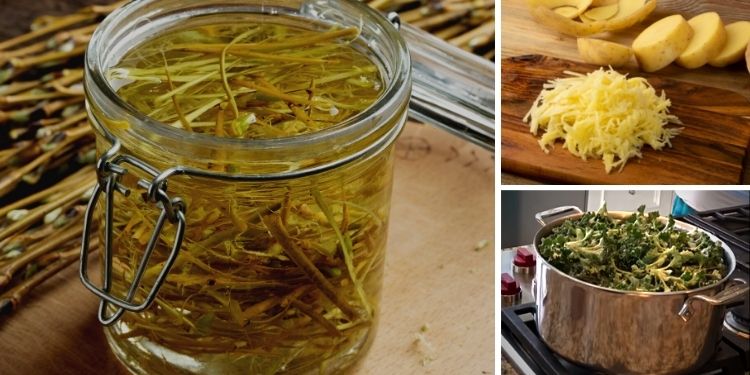













That Amish All-Purpose Tonic looks an awful lot like Fire Cider, although some proportions differ. I use habanero peppers in mine, and for those you DO need gloves. I got a chuckle at seeing gloves were needed to handle mere jalapeños.
My Master Tonic is a similar preparation to the All Purpose Tonic. I also add black pepper to aid digestion of the turmeric.
According to Dr Oz, thats been proven to be very beneficial. It’s one of the helpful things I gleaned from the shows early years. Later years not so much! Anyway, since then, I follow the Doctors advise and keep a shaker filled with a spice mix of turmeric, black pepper, and garlic salt handy for a sprinkle on buttered corn, eggs, and baked potato’s!
Wow – tough crowd. Sorry, but I handle jalapeños and serranos almost daily and without gloves. I also used to grow Carolina Reapers. Those I handled with gloves.
I take fire cider daily as a tonic, using a composite of several recipes. I’ll add the Amish recipe in that mix next time to see if it makes any difference.
W, I live in Arizona. Even little old ladies will wear gloves when working with Jalapeno. Chilis are THE fruit here and always was. I add a cup or two of chopped chilis to about anything. Helado de Chili/chili ice cream, is a favorite. Jalapeno are always used, but other varieties of chili are also used in recipes for the differences of flavor. When the chili roasters come to town, we get 100 lbs per person. That usually is enough for the season. And, yep, I’m cautious about cutting up chilis because just licking the juice off the fingers is not enough. niio
Hopefully the Amish have a remedy for insanity that might help
Raven Piece of Shit and Piece of Shit Frank DeMarco.
They are so far gone though there is likely nothing that will help.
I suspect that they are the same person.
Not for nothing Chuck, I know this is well intended but please – just let it go!
I don’t know who they are but maybe it would work for the OBAMAS, CLINTONS and the BIDENS.
When I (who am not very experienced) notice missing or incomplete information, I get really skeptical…
white willow bark — should be the internal bark, not the outer edge.
mustard — powder? or prepared? fresh?
I’m actually trying to learn more about foraging and the uses for common plants. It’s a challenge.
You mean Foxfire.
Tony G,
OOPS… Senior moment… Thanks for the correction.
BUT, if you want to learn how to steal a Russian jet using your thoughts, Firefox would be a humorous exercise.
I order white willow bark capsules from Swanson’s Vitamins – they often Jacobs 30-40% discount
and sometimes
i take a White Willow capsule along with a Corydalis capsule,
combining the best of Native American & ancient Chinese pain relief.
*Swanson’s often has discounts
(I did not key in the word “Jacobs”…that was an a.i. auto correct glitch)
Wow I just found out about Z Library! Thank you prepped in training!
As a rule of thumb, I generally rule out folk remedies, but the ones presented for discussion here seem to be ones that could provide some temporary relief and comfort. Even if it’s just a placebo effect, it could be better than nothing at all. However, treating symptoms alone is never a good idea. Always best to play it safe and get checked out! Start with your internist. Never make your own assumption and see a specialist first. Let your internist make that decision. There are a lot of things that present themselves on the outside that when treated do not help anything that is actually causing it from on the inside.
One thing I have learned the hard way (the very hard way) about medications containing apple cider vinegar (any vinegar, really) is that the vinegar can have a very powerful side-effect. It does certainly do what it was added to the medication to do, but since it is known to be consumed, sometimes daily, it is often not thought to have any dangers or side effects at all.
I have been taking a very effective Amish medication for the severe cramps I get in my legs in the summer. It is very effective and works almost immediately. However, several days ago I was careless when I took the dose. I usually add the dose to a small amount of water or juice and then drink it down carefully, for, to be honest, I hate the taste of the vinegar. Anyway, I managed to get most of the dose down my throat undiluted.
The apple cider Venigar burned my throat something fierce. Of course, I started coughing, hard. Unfortunately, I had damaged the ribs on my left side, in front, a few days prior, while moving, and the coughing caused the pain in the ribs to flare up significantly. It took me a very long time to finally control the coughing, drink enough water to partially dilute and wash down the vinegar down my throat.
The damage was done, though. The least bit of irritation and I would start coughing, which would cause my ribs to hurt, which would make me cough more. I could not get a good breath and would finally have to try and take a deep breath. You guessed it. More rib pain.
I finally found my Boost brand sports oxygen. I could take a good throat lozenge, which helped ease the pain in my throat, and take an occasional shallow shot of the oxygen. That way I did not have to breathe deeply but could get plenty of oxygen in my system without triggering more coughing or rib pain.
I got two things from this. One, be extremely careful when consuming anything thing with apple cider vinegar, any vinegar, really, and keep some sort of safe, legal oxygen on hand for supplement normal breathing when that might not get enough O2 into your system. Of course, check this with a doctor before doing so. I am not a doctor and cannot take responsibility for anyone’s use of the product.
Actually, I guess I learned more than just two things. Those two just described, but also that there are products and procedures that apply to sports and other activities that can have applications for other things if cleared by a doctor.
Just my opinion.
Jerry,
I feel your pain! Literally. I, too, have been taking the Amish remedy for foot and leg cramps for a couple of months now. It’s unquestionably the worst tasting stuff I’ve ever had in my mouth! There is a reason they recommend mixing (diluting) it with water or fruit juice. But it works. I woke up one night last week from a leg cramp and forgot about the mixing. I chugged a full capful down and spent the next hour coughing, wheezing, and trying to get the bitter taste out of my mouth. Made me completely forget about the leg cramp!
Last night was a different story. Was awakened on four occasions by leg cramps. Usually after one treatment of the Amish remedy, I go back to sleep for the rest of the night. Last night required four doses of the stuff. The label says each treatment should last for up to 24 hrs. But “individual results may vary.” Guess my results varied somewhat. I must now wonder if the body stops reacting to the formula after a while. Could this also happen with other home remedies?
Eat a banana
Are you certain your leg cramps aren’t simply a result of magnesium deficiency? Try Magnesium Breakthrough product from Amazon, and you will not have those cramps, I am betting. PLUS, you will sleep a lot better at night, as well. Be aware, though, that taking cheap-o Mag. Oxide or cheap Cal-Mag supplements will NOT do the trick! I love Mag. Breakthrough, because of the combination of several magnesiums in that product, and the fact that it has in it many quality forms of magnesium. YOU CAN ALSO TRY: Homeopathic Mag. Phos., which is specifically made for cramps! This stuff is amazing!
Best always,
Joyce E. Stotts
Certified Natural Health Professional since 2006
First things first…any consumed vinegar must be Bragg’s raw apple cider vinegar, always diluted with purified water, add a little honey to off-set the acv taste. Using a straw by passes the taste buds on the front of the tongue. The raw acv is best as the mother is antibacterial, the processed acv can work, but the mother takes care of other concerns as well. A daily tonic of 2 tablespoons raw acv, 1 cup room temperature water, or juice (not orange juice), a spoonful of raw honey will keep your veins open. I know this as fact, a good friend had heart surgery and the doctor was astounded to find a pinhole for blood to flow through as surgery had been recommended for a few years. I just dump my mixture in without measuring since I’ve been using this tonic for several years, like in the eighties!! Acv aided me in healing my client that had fallen and deeply cut her shin about 4 inches long, refused to see a doctor, therefore I used hot water and poured a good measure of acv in a gallon bucket half full of water. Seeing her wound caused a reaction to my stamina and I needed a moment to sustain myself before I could clean the wound. I can handle wounds on animals and myself but not other people. I learned from my children not to ingest white vinegar as it can KILL you, they had learned in science class, but I informed them I was using brown acv. For heartburn a little water with acv and enough baking soda to make the drink fizz and drink it while fizzing will settle the stomach. I believe you had not been informed to dilute the acv to acclimate your system to accept this remedy. You can lower the amount of acv until you can tolerate it’s use. God bless…
I can’t remember what it was ‘called’, but my Amish great-aunt used to make something that had liquor in it. We used to take it for colds etc. Well, one day my little sister (who was about 10 at the time) got ahold of it and drank the whole bottle of medicine. She was hugging the toliet the next day.
I’m interested in how to make the Amish formula for leg cramps. It’s got garlic, apple cider vinegar, and other ingredients, but I need the ratio/ingredient amounts. Works great, but a bit pricey at the local health food store.
My bottle indicates ingredients of organic apple cider vinegar, all-natural ginger and garlic juice. I’m sure the ratios are proprietary. If you know any of the Amish people, they might share their own recipe with you. Otherwise, you are left with a trial and error method unless you have it analyzed by a lab. You’re right about it being pretty pricey. I would like to know the formulation as well given how much I’m having to use lately.
My wife has leg cramps alot she learned from the Amish here inBerks county PA just drink a little dill pickle juice. The cramps are gone instantly. I con’t explain why it works but it does.
ED.. Thank you! Worth a try. Has to taste better than the Amish formula. My Doc says I get dehydrated and need to drink more water. There is only so much water a person can drink, however. Yes, I probably don’t drink enough. Especially during this time of the “FLASH DROUGHT.” Been mighty hot and dry here in the Southland. I hear its pretty bad also in the Mid-West.
A great topical remedy for leg cramps is magnesium oil, made by dissolving magnesium chloride in water. I keep some by the bed and use topically in the now rare instances in which I get a cramp. It works in a couple of minutes. Just rub the “oil” in. Most people are severely deficient in magnesium, found in green leafy veggies.
Katherine, Thank you also for your suggestion. This is also worth a try. Will pick some up next time I go to town.
Can also take baths with a cup of epsom salt dissolved in the water. You take up magnesium through the skin.
Doctors use to routinely prescribe quinine for leg cramps, but no longer do. Tonic water, which is available in any grocery store, contains quinine, and makes a nice refreshing cocktail or mock tail on a hot summers day.. if you try it and it works, always let your doctor know what you’er doing.
Quinine is hard to find now, so our doctor recommends tonic water. Some people don’t like the taste, but we love it. I’ve also been told by friends that they eat a dill pickle or drink pickle juice for cramps, and another friend drinks a bottle of “electrolyte water” daily which keeps leg cramps in check.
Yep, in fact, it is the electrolytes that can often be the issue. I can’t remember which way around it is for the legs, but cramps in one side is supposed to be sodium deficiency and the other side is supposed to be potassium deficiency. In fact, drinking too much water can also cause this issue due to the electrolytes required (just as profuse sweating, diarrhea etc.). Magnesium also v important – I often mix epsom satls and mg chloride together in a bath or a foot soak – different forms of magnesium do different things, so it’s great if you can get a couple or more in there – epsom salts is very beneficial for detox and chloride is great for pain.
Leonore, Thank you. I find tonic water goes the best with gin and a lime! 🙂
Cramps in extremities? Sounds like electrolytes are needed.
For me, these remedies are not practical or even proven, so I would do the following.
Keep your Vitamin-D levels high, around 60-80 ng/ml with supplements or make your own.
Cholesterol + ultra violate light = Vitamin-D.
Take Black elderberry Sambucas syrup, the stronger, the better with the vitamin-D, they work together.
Take strong black seed oil, not just any brand. You can add powdered capsules as well for an extra punch.
Take Shilajit resin in resin form not capsules for overall health, it gets everything working together and gives you an almost instant energy boost, best taken in the morning with your first meal.
Basic nutrient deficiencies we mostly suffer from need to be corrected, magnesium, zinc, iodine – lugols is best as it has the 2 forms the body needs, add ATP Co-factor to enhance absorption,
only 2 common B vitamins.
Headaches are due to a skeletal problem or infection, while treating the symptoms are ok in the short run, but treating the underlying cause is best.
An MD on YouTube who knows what he is talking about on a number of topics is Jorge Flechas
search his name or click this link
he has videos on a number of health topics, with actionable advice. This MD is in practice, has treated patients, has done research, so he is the real deal not just another MD or Academian.
There are far too many things to go into here and not enough time, so do your own research but always ask of any professional’s advice – “Show me results” & “Prove it” before doing anything.
Be on the lookout for any cherry-picked results.
Black currants are also suppose to be very healthful, but a little hard to find. For many years, growing black currants was actually outlawed in many states as they feared other crops of high value, like wine grapes, would be effected by communicable diseases. That law has been rolled back now in many states, but black currants, except for juice, jam or dried fruit, are still pretty hard to find. Connecticut now has a substantial black currant crop and roots are available online so you can grow your own.
CC: they can carry blister rust that hits white pines, often killing them in plantation settings. In the 30s, FDR’s people urged farmers to plant them for the pumpwood industry. That moved west and then to Canada. One sister has several white pines at the edge of her property, and a neighbor had an acre or so–all were old, monsters, and planted back in the 30s. One older pine started to die as did some of the neighbor’s. Within a few year, they collapsed, but the rest are still fine. Pines dealt with rust for generations, but raising trees like corn hurt them. niio
For cramps of all causes can be reduced with yellow mustard that you buy at the grocery condiments used for sandwiches. Not the deli type. I would get leg cramps and in order to get to the kitchen for the mustard, I used Reflexology to ease the cramp. Use your thumb and index finger to pinch the v between your nose and upper lip, the cramp will subside. Make sure you take a spoonful of mustard before going back to bed. I keep mustard packets next to my bed in the night stand drawer. God bless…
May God bless all of you! You’re great! Best series of responses I’ve read on this site in a long time. This is in keeping with the purpose this site was originally created. People helping people. Thanks to all who have commented. Your advice is greatly appreciated.
Happy 4th of July! God Bless America! ??
And you! niio